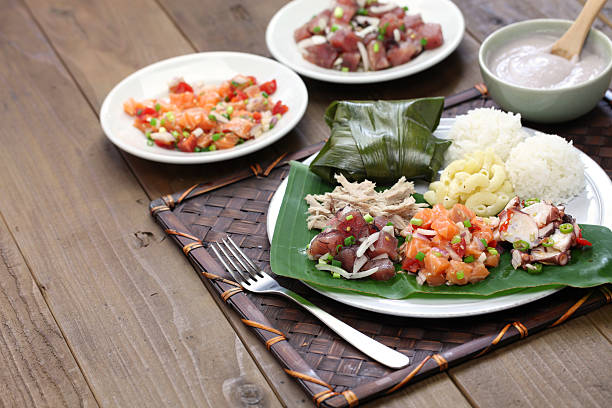Savoring the Flavors: A Deep Dive into Hawaiian Cuisine
Hawaiian cuisine, with its rich history and cultural influences, is becoming a culinary sensation worldwide. This article takes you on a delightful gastronomic journey, exploring the vibrant flavors, unique techniques, and innovative approaches that define contemporary Hawaiian food.

A Taste of History
The traditional Hawaiian diet was rich in fresh fish, fruits, and vegetables, with staples like taro, sweet potatoes, and breadfruit. However, the culinary landscape dramatically changed with the influx of immigrants from China, Japan, Portugal, Korea, and the Philippines. They brought with them their cooking techniques and flavors, shaping the diverse and dynamic Hawaiian cuisine we know today.
Unique Ingredients
Hawaii’s tropical climate and fertile soil produce a plethora of unique fruits, vegetables, and seafood. Tuna (ahi), Mahi-mahi, and Ono are some popular fish varieties. Among fruits, you’ll find luscious pineapples, juicy mangoes, and the lesser-known but equally delicious lilikoi (passion fruit). The root vegetable taro is a staple and is used to make the traditional Hawaiian dish, poi.
Traditional Dishes Reimagined
Innovative chefs are now reimagining traditional dishes with modern twists. For example, the classic poke bowl, traditionally made with raw fish, seaweed, and rice, is now being served with exciting new toppings like avocado, edamame, and even truffle oil. Similarly, the iconic loco moco (burger patty with gravy and an egg) is now available with gourmet ingredients like wagyu beef and truffle-infused gravy.
The Rise of Hawaiian Food Trucks
Hawaiian food trucks have been a significant trend, making authentic and fusion Hawaiian food accessible and affordable. From poke bowls to Kalua pork tacos, these mobile eateries are a hit with foodies and are a testament to the popularity and versatility of Hawaiian cuisine.
Responsible Sourcing and Sustainability
Hawaii’s rich marine life and fertile lands make it a prime spot for sustainable and responsible sourcing. Many restaurants are now focusing on farm-to-table and sea-to-table concepts, aiming to lower their environmental impact and support local producers.
- Hawaii is the only U.S. state that grows coffee, making it a prime spot for locally sourced brews.
- The Hawaiian fish auction in Honolulu is a unique institution where restaurants bid on the day’s catch, encouraging local fishing and fresh produce.
- Many restaurants are now growing their herbs and vegetables, reducing their carbon footprint and ensuring fresh ingredients.
Hawaiian cuisine is a melting pot of diverse flavors and culinary traditions. Its rich history, unique ingredients, innovative recipes, and focus on sustainability make it a fascinating topic for food enthusiasts. So, next time you’re seeking a culinary adventure, let the vibrant, tropical flavors of Hawaiian cuisine transport you to the heart of the Pacific.




